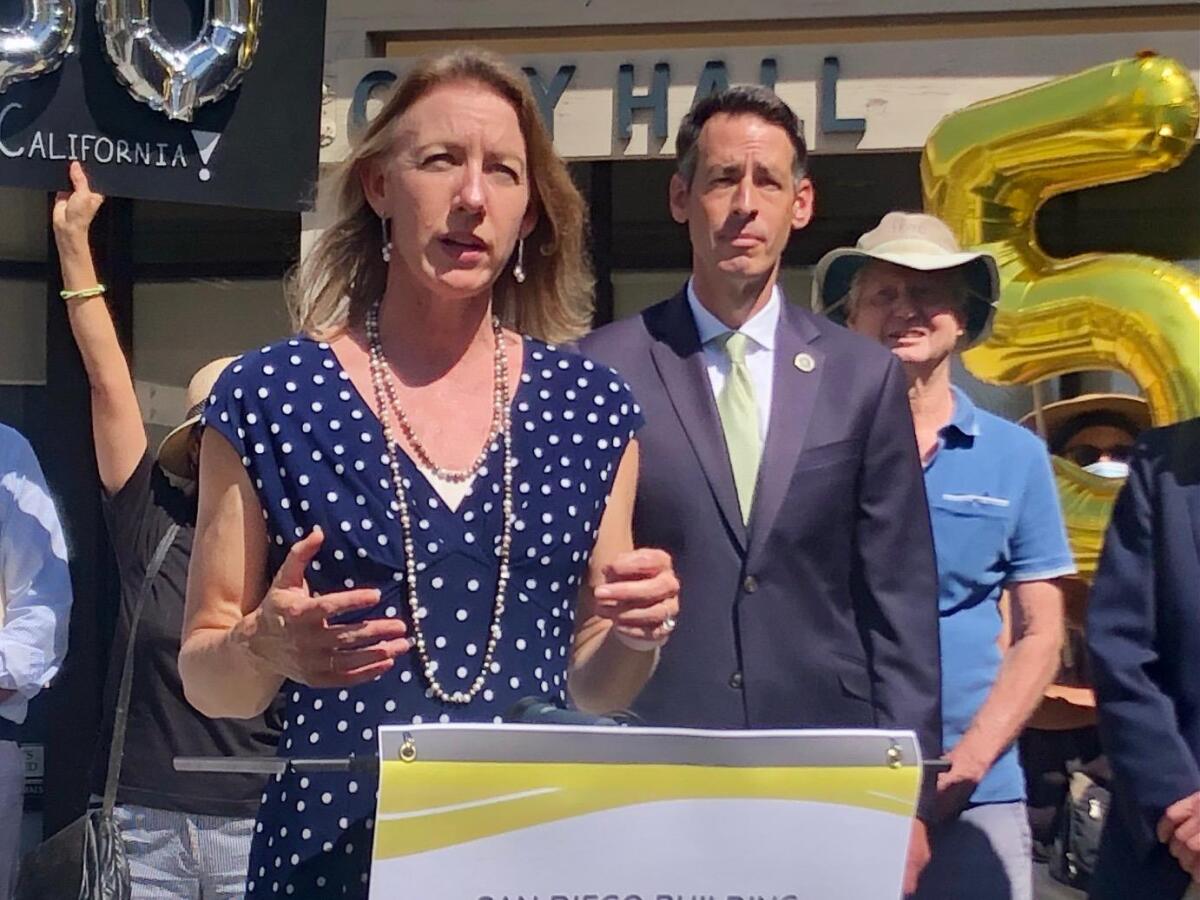Encinitas bans natural gas in new buildings, including homes

ENCINITAS, Calif. â The Encinitas City Council has passed a sweeping building ordinance that, with few exceptions, will eliminate installing natural gas infrastructure on new residential and commercial construction within city limits.
The ordinance, which passed on a 5-0 vote late Wednesday, is similar to other measures adopted by 49 other communities in California in recent years but most of those municipalities are in Northern California. The Encinitas ordinance is the most comprehensive ordinance passed by a community in San Diego County.
âWeâre really excited because weâre doing our part, we care about climate change, we want to be a more environmentally committed city and weâre doing everything we can to get there,â Encinitas Mayor Catherine Blakespear said.
The exceptions are quite narrow and reserved for emergency buildings that are deemed essential facilities as defined by the California Health and Safety Code and construction in extreme scenarios for projects that would need significant utility upgrades.
Restaurants that demonstrate the need to cook with a flame also could qualify for an exception. Examples include eateries that use woks, pizza ovens and barbecue-themed restaurants. But if an exception is made, the restaurant must employ methods that will reduce the effects of the gas-fueled applianceâs greenhouse gas.
When an exception is made, the new construction must be wired so it can transition to be electric-ready in the future.
The ordinance also applies to accessory dwelling units, more commonly called granny flats.
âThis is a very good ordinance that will essentially allow us to reduce our local greenhouse gases and air pollutants within our building structures, so itâs a very good step forward,â Encinitas City Council Member Joe Mosca said.
Blakespear said the ordinance will not lead to a steep rise in construction costs.
âFor example, an electric water heater is about the same cost as a gas water heater so it actually is not supposed to add substantially to costs,â she said. âIf somebody is building a granny flat to their house, they have to put in electricity because you have to flick on the light. But if you donât have to run gas, itâs actually cheaper because you then donât have [to install] infrastructure for the gas.â
According to the California Air Resources Board, residential and commercial buildings are responsible for about 25% of the stateâs greenhouse gas emissions when accounting for fossil fuels consumed on-site and electricity demand. California has set a goal to derive 100% of its electricity from carbon-free sources by 2045 or sooner.
The Encinitas ordinance was supported by the San Diego Building Electrification Coalition, a partnership of environmental and public policy groups.
âIt is clear there is no time for modest actions to address climate change and we need our cities to act boldly,â Karinna Gonzalez of Hammond Climate Solutions said at a media briefing before the vote. âAdopting an all-electric ordinance is the first step to eliminating our dependency on fossil fuels.â
But Kerry Jackson, a fellow at the Center for California Reform at the Pacific Research Institute, a think tank based in San Francisco that espouses free-market solutions to public policy issues, questioned the effectiveness of all-electric ordinances.
âIf you permanently shut down fossil fuel use in all of California tomorrow, the impact on greenhouse gas emissions would be about zero,â Jackson said. âThis state puts out only about 1% of global greenhouse gas emissions. Meanwhile, China and India will be building dozens if not hundreds of coal plants in the coming years. Thereâs nothing this state, not even this entire nation, can do to offset the increased emissions from those countries.â
San Diego Gas & Electric, which includes natural gas as a crucial part of its energy portfolio, issued a statement about the Encinitas ordinance that promotes a broad approach to address the climate.
âFighting climate change requires the widespread adoption of multiple strategies and technologies to reduce greenhouse gas emissions â everything from stronger building codes and transportation electrification to energy storage and hydrogen innovations,â SDG&E spokeswoman Helen Gao said in an email.
âSDG&E supports policies that are cost-effective and inclusive of all technologies with the potential to reduce [greenhouse gas] emissions. SDG&E has set an aggressive goal to achieve net-zero emissions by 2045, and we look forward to collaborating with Encinitas and other regional leaders to achieve this critical milestone.â
SDG&E is a subsidiary of Sempra, which is also the parent company of Southern California Gas, the largest natural gas distribution utility in the country.
In 2019, a coalition backed by SoCalGas and business groups lined up about 100 cities and counties that endorsed a push for âbalanced energy solutionsâ that clean energy advocates said would slow local governments banning or discouraging gas hookups in new construction.
SoCalGas also filed suit against the California Energy Commission last year, complaining the commission failed to fulfill its legal requirement to report on the benefits of natural gas. The company and the commission quietly settled the lawsuit last month. Details were not disclosed, but a spokeswoman for the energy commission told the Los Angeles Times the commission did not take the steps SoCalGas had sought.
Berkeley in the summer of 2019 was the first city in the U.S. to adopt a ban on natural gas hookups for new construction. Since then, communities including San Jose, Oakland and San Francisco have passed similar measures. The trend has not been as strong in Southern California, with the exception of Santa Monica, Ojai and now Encinitas.
Some cooks and chefs have said they prefer gas-powered ovens to electric. The California Restaurant Assn. has challenged Berkeleyâs ban on natural gas in new construction in court.
âThis shouldnât need to be said, but the loss of flame cooking in restaurant settings would dramatically impact restaurant kitchens, where chefs rely on gas stoves to grill vegetables, sear meats and create meals of all kinds inspired by cuisines from all over the world,â restaurant association Chief Executive Jot Condie said last month. âAny law mandating the use of electric rather than gas stoves reduces those choices, and is also likely to impact what restaurants pay for energy in the future.â
The Encinitas ordinance will go into effect once it is approved upon a second reading of the City Council. The second reading is scheduled for Oct. 13.
Nikolewski writes for the San Diego Union-Tribune.
More to Read
Sign up for Essential California
The most important California stories and recommendations in your inbox every morning.
You may occasionally receive promotional content from the Los Angeles Times.











